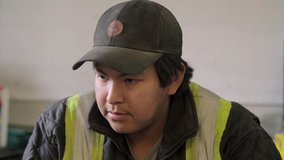New release
Coming
None
To my birthmother...
2002
54 min
Leaving soon
Delving into the past is a risky business but for someone who's been adopted, there's a compelling need to know. When Marie Klaassen went looking for her birthmother, she discovered that trying to find her would take perseverance and guts and that succeeding in the search was not the end but another beginning. To my birthmother... answers the question "Oh my God, how did you find me?" with warmth and dignity. It is Marie's frank and earthy account of a personal journey through other times and other places to find the woman who gave her life. Told as a video …

Details
Delving into the past is a risky business but for someone who's been adopted, there's a compelling need to know. When Marie Klaassen went looking for her birthmother, she discovered that trying to find her would take perseverance and guts and that succeeding in the search was not the end but another beginning.
To my birthmother... answers the question "Oh my God, how did you find me?" with warmth and dignity. It is Marie's frank and earthy account of a personal journey through other times and other places to find the woman who gave her life. Told as a video diary, it's a fascinating story of a reunion fraught with suspense, humour and humanity.
To my birthmother... answers the question "Oh my God, how did you find me?" with warmth and dignity. It is Marie's frank and earthy account of a personal journey through other times and other places to find the woman who gave her life. Told as a video diary, it's a fascinating story of a reunion fraught with suspense, humour and humanity.
-
directorBeverly Shaffer
-
participantMarie KlaassenJanine MaxwellHenry KlaassenGrace KlaassenBob SargalisLeah KlaassenJon KlaassenJoan JezegouHolly BoychukIsabelle SargalisLionel SargalisHolly KramerNorma Hughes Howard
-
editorHoward Goldberg
-
director of photographyJoan Hutton
-
camera assistantJulia Auriemma
-
sound recordistStephen BourneGordon RossMichael KennedyPatrick Rowan
-
production managerElisa Suppa
-
production assistantLionel SargalisKaren Holah
-
additional editingNatacha Dufaux
-
original musicRobert M. Lepage
-
additional musicIntermède Plus
-
sound editorDon Ayer
-
foleyLise Wedlock
-
re-recordingJean Paul Vialard
-
titlesLouise OveryArnold Koroshegyi
-
graphicsLouise OveryArnold Koroshegyi
-
online editorDenis Pilon
-
post-production co-ordinatorLinda PayetteClaude Cardinal
-
digital editing technicianChaz Oliver
-
production administration assistantNickie MerullaChristine Williams
-
program administratorMarie Tonto-Donati
-
producerBeverly ShafferMark Zannis
-
executive producerSally Bochner

















